Why you need a clear LinkedIn strategy
Are you posting regularly on LinkedIn, but your content isn’t reaching the right audience? Are you spending hours creating posts without seeing tangible business results? The issue isn’t your content, it’s the lack of a structured LinkedIn strategy.
On LinkedIn, 80% of entrepreneurs fail not due to lack of talent, but because they navigate blindly. They post randomly, copy what works for others, and burn out without ever turning their presence into a business pipeline.
An effective LinkedIn business strategy changes everything:
- You attract exactly the prospects you want
- Every post works toward your business goals
- You save time by knowing what to post
- You build authority that converts
In this guide, you will discover how to build your winning LinkedIn strategy in 5 simple steps, even if you’re not a marketer.
Step 1: Set up your settings and goals
Goal: define your strategy by establishing clear objectives and communication preferences.
How to do it
1.1 - Define your primary goals
In "Strategy > Settings," check your main objectives:
- Find your first clients
- Increase your brand credibility
- Grow your business
- Attract talent
- Network in your industry
1.2 - Configure your preferences
- Language: French or English
- Time zone: adjust according to your location
- Posting frequency: based on your availability
1.3 - Save your settings
Click “Save Changes” to finalize your setup.
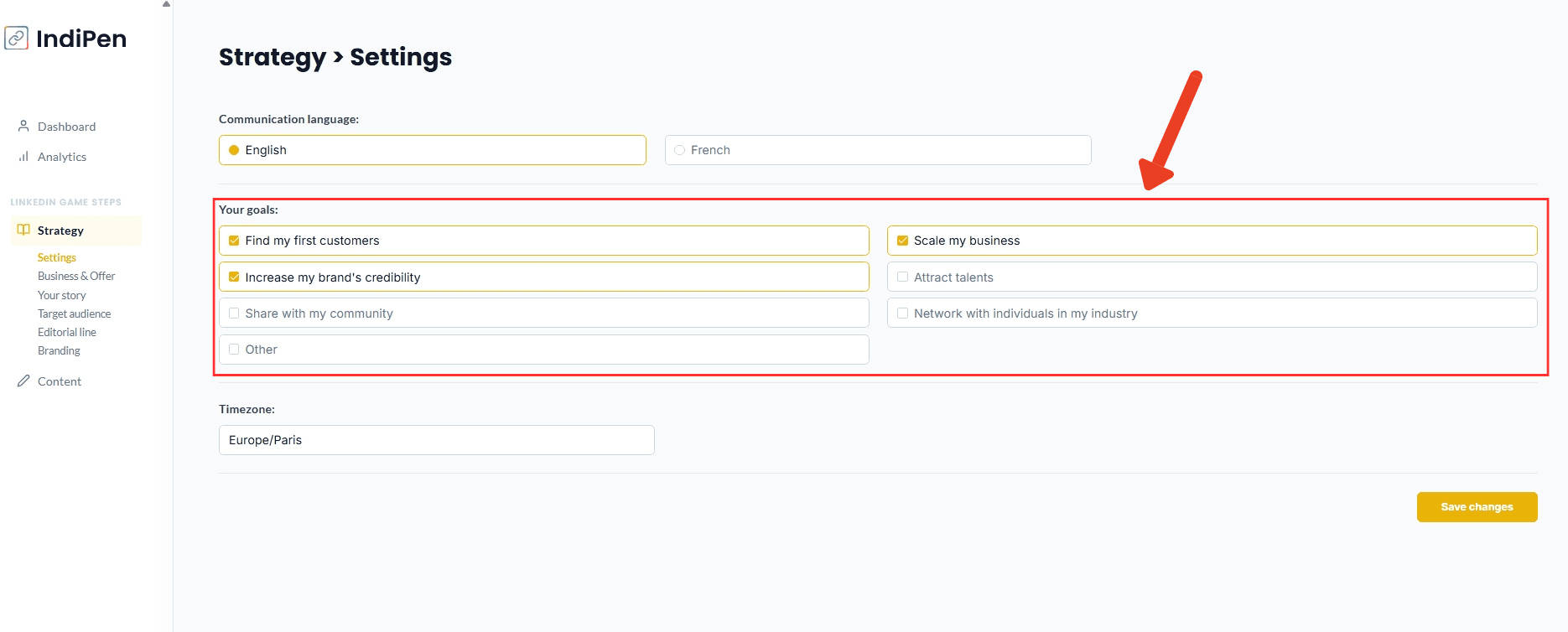
Step 2: Clarify your business before posting
Goal: lay the foundation of your LinkedIn strategy by clearly defining your offer and what sets you apart in the market.
How to do it
2.1 - Define your company and offer type
Be clear about what you provide: a service, a product, or a mix of both? Write it in a simple sentence so your audience immediately understands your field.
Example:
- ✅ “I offer LinkedIn coaching for B2B entrepreneurs”
- ✅ “I sell a SaaS platform that helps agencies generate leads automatically”
2.2 - Pitch your offer in a few sentences
Transform your offer into a clear pitch in under 3 sentences. Explain it to someone who knows nothing about your industry and make them want to learn more.
Example:
- ❌ “I help businesses improve their online presence.” → Too vague
- ✅ “I help small agencies generate qualified leads via LinkedIn without spending hours creating content.”
2.3 - Define key benefits and differentiators
List what makes your product or service unique. What do clients get with you that they can’t find elsewhere? Focus on 3–5 key points for clarity and impact.
Example:
- Save time with a ready-to-use methodology
- Measurable results from the first month
- Personalized support based on client profile
💡 Tip: If you use IndiPen, fill in this information directly in your dashboard. The software will then customize your posts and LinkedIn strategy based on your offer and differentiators.
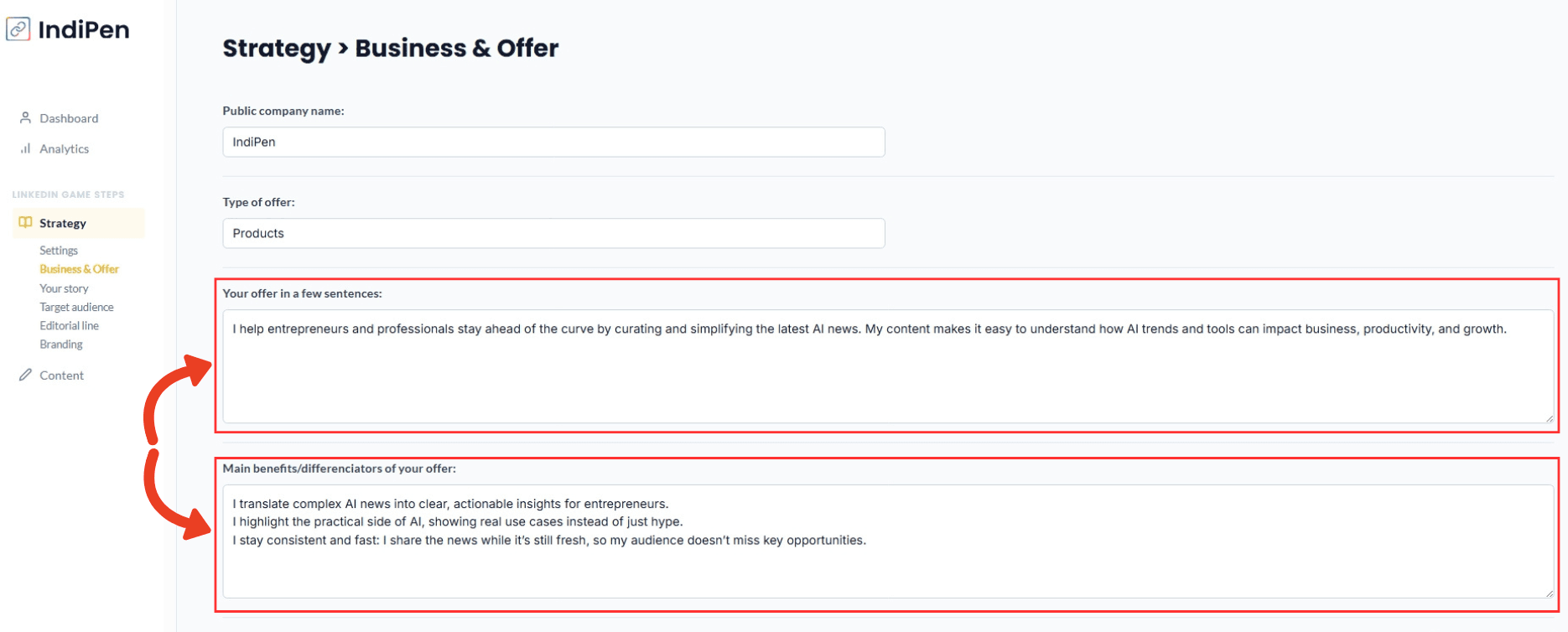
Step 3: Define your universe and personal branding
Goal: lay the foundation of your content by defining your expertise pillars, personal information to share, and visuals that represent you.
How to do it
3.1 - Choose your 3 core expertise areas
These 3 pillars will guide your entire editorial line. They should reflect what you master best and what your audience expects from you.
Example:
- ✅ “Growth hacking for small businesses”
- ✅ “LinkedIn strategy for entrepreneurs”
- ✅ “Productivity and organizational methods”
💡 Tip: Be specific and concrete: the clearer your pillars, the more coherent and relevant your content.
3.2 - Introduce yourself: “about me”
Share relevant information for your business, as well as what can enrich your storytelling and humanize your personal brand.
Example:
- “I love the mountains and pushing my limits, which inspires my entrepreneurial challenges.”
- “I care deeply about sustainability and integrate this principle into my projects.”
💡 Tip: This information helps create authentic storytelling in your posts and strengthen your personal brand.
3.3 - Complete your portrait library
Upload a few photos of yourself, ideally selfies or professional portraits that IndiPen will use to create future visuals.
Example:
- Smiling selfies or posed shots in your workspace
- Photos illustrating your universe (passions, values, lifestyle)
💡 Tip: The more visuals you provide, the more IndiPen can generate graphics consistent with your identity. Don’t worry if some backgrounds aren’t perfect, IndiPen automatically removes backgrounds with one click!
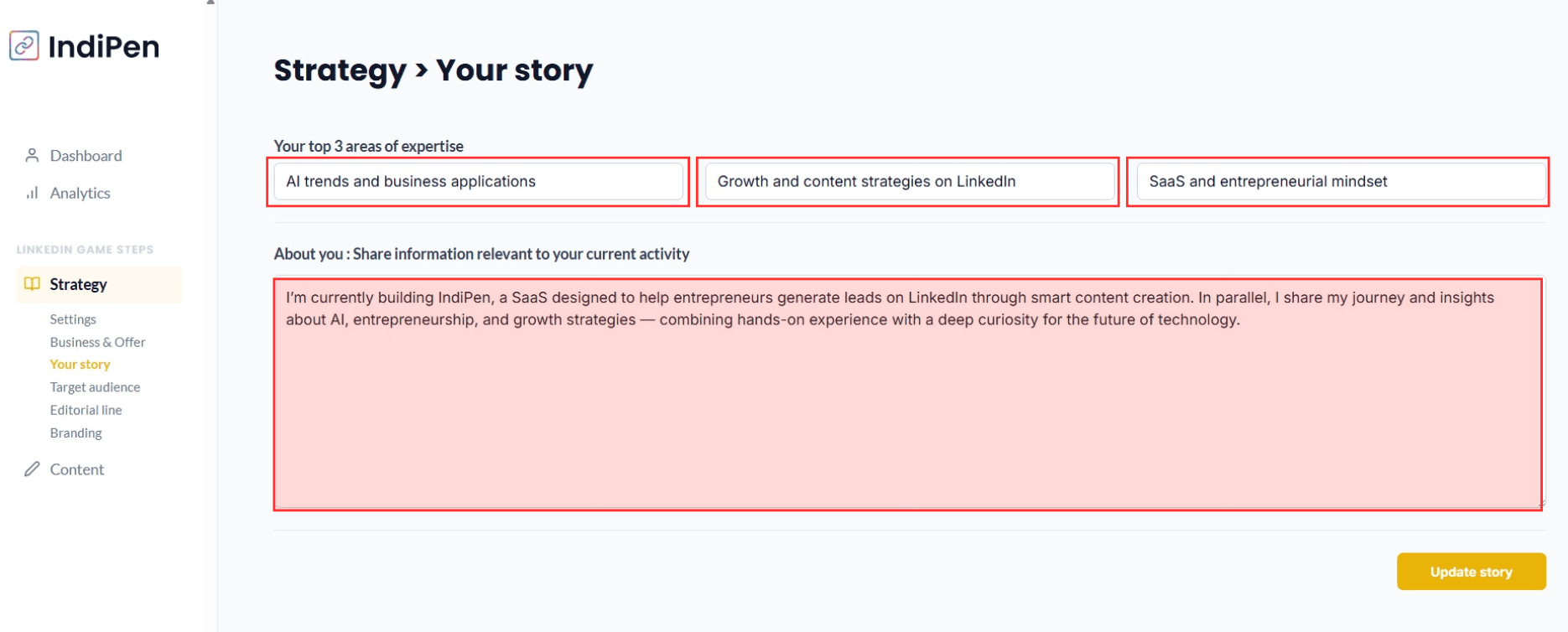
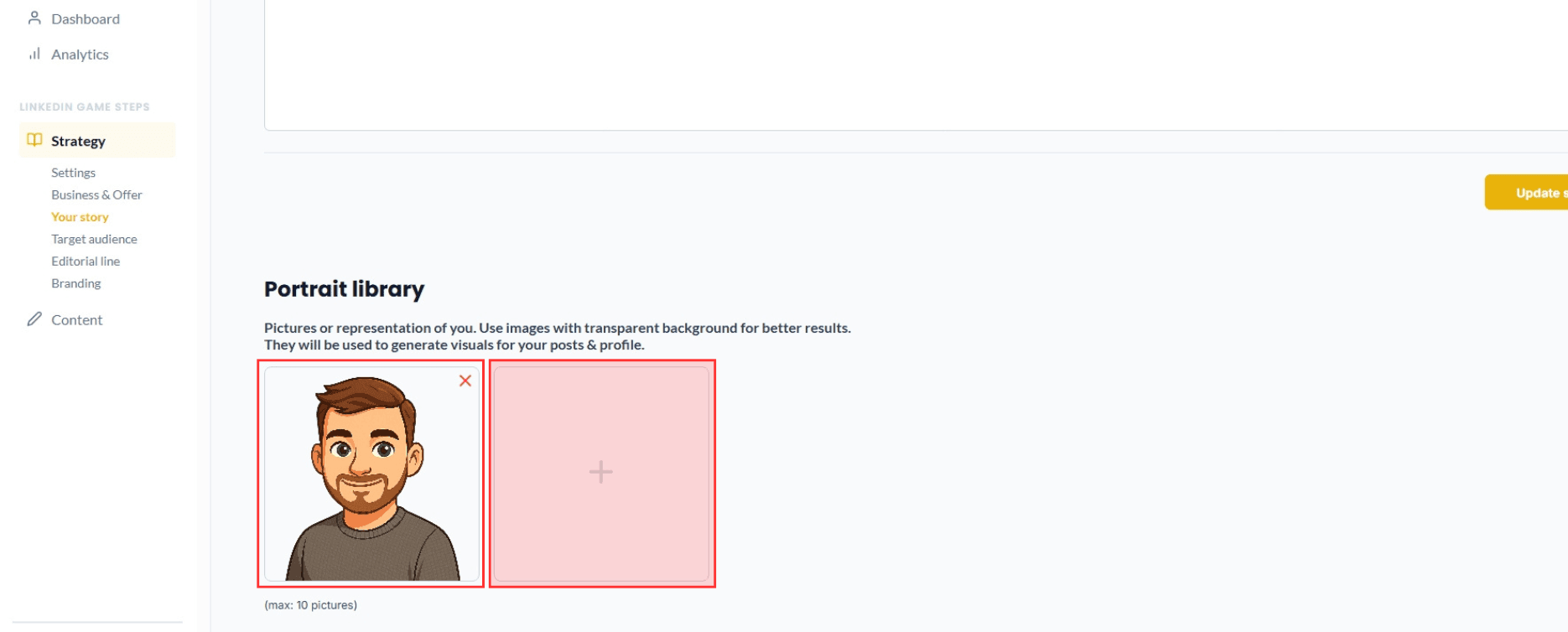
Step 4: Create your personas with IndiPen and identify their pain points
Goal: identify the companies and individuals you want to reach on LinkedIn, and understand their frustrations so your content speaks directly to them.
How to do it
4.1 - Define your company persona
Before thinking about individuals, start by profiling the companies you target:
- What industry do you target?
- What company size?
- What criteria make a company interesting for your offer?
This step allows IndiPen to understand which companies are relevant for your business.
4.2 - Define your decision-maker persona
Once the companies are identified, focus on the person within these companies you want to meet on LinkedIn:
- Who makes the decisions you are targeting?
- What is their personality?
- What are their pain points and frustrations?
- What are their motivations and expectations regarding your offer?
- What is their level of knowledge or education about your sector/service?
💡 Tip: Try to “get into their head” to really understand how to speak to them effectively.
4.3 - Generate your personas automatically with IndiPen
Simply click “Generate With IndiPen” in the top right, then describe your persona in a few sentences. IndiPen will automatically create a full persona for you.
- You only need to review, edit, add, or validate the information if necessary.
- The tool takes into account your industry, your offer, and your business goals to generate a detailed persona.
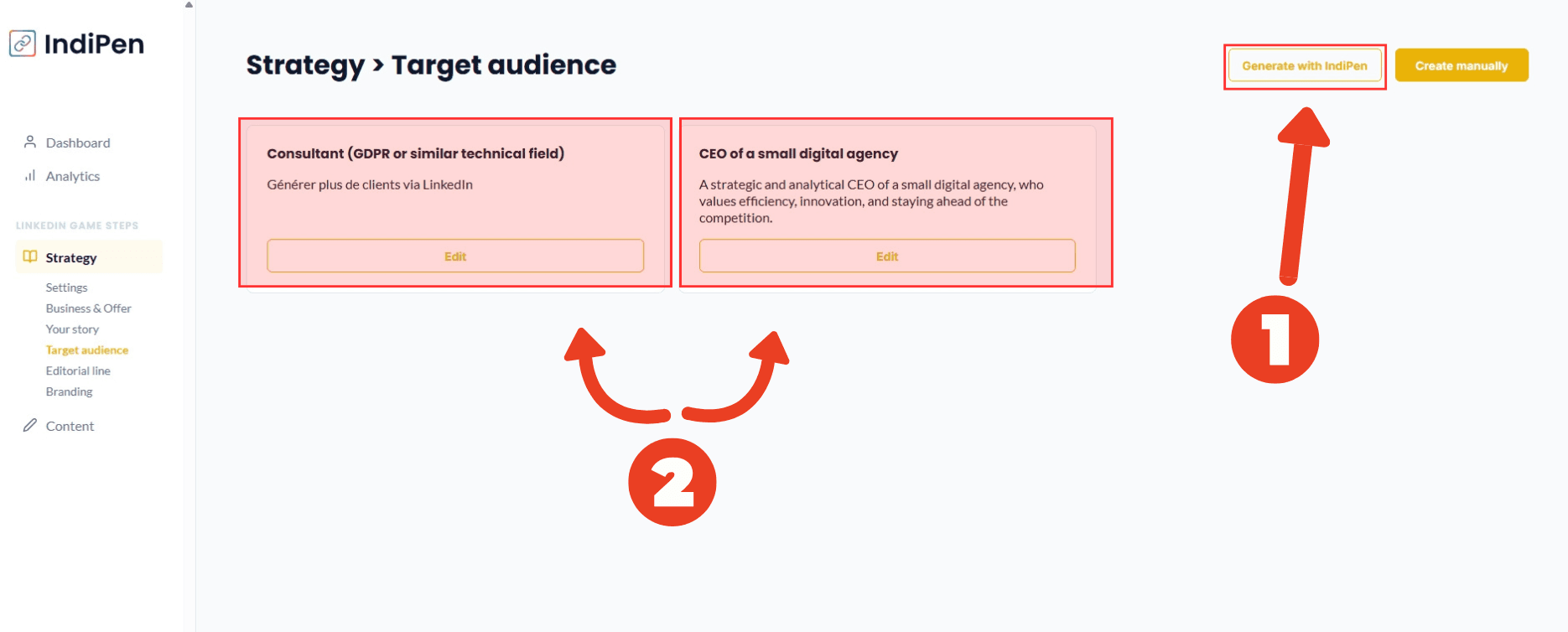
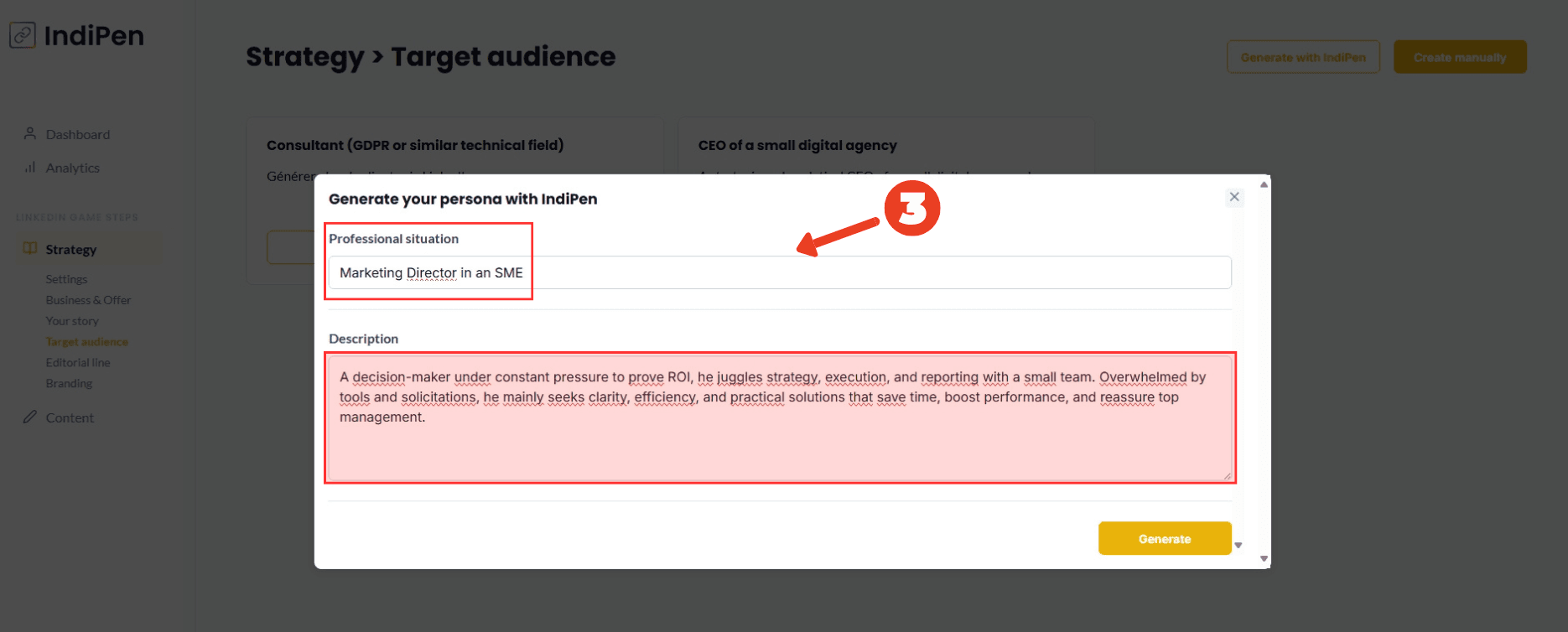
4.4 - Personalize and refine
Even if generated automatically, you can adjust the personas:
- Target company size
- Decision-maker hierarchy level
- Specific personality traits
- Detailed motivations and frustrations
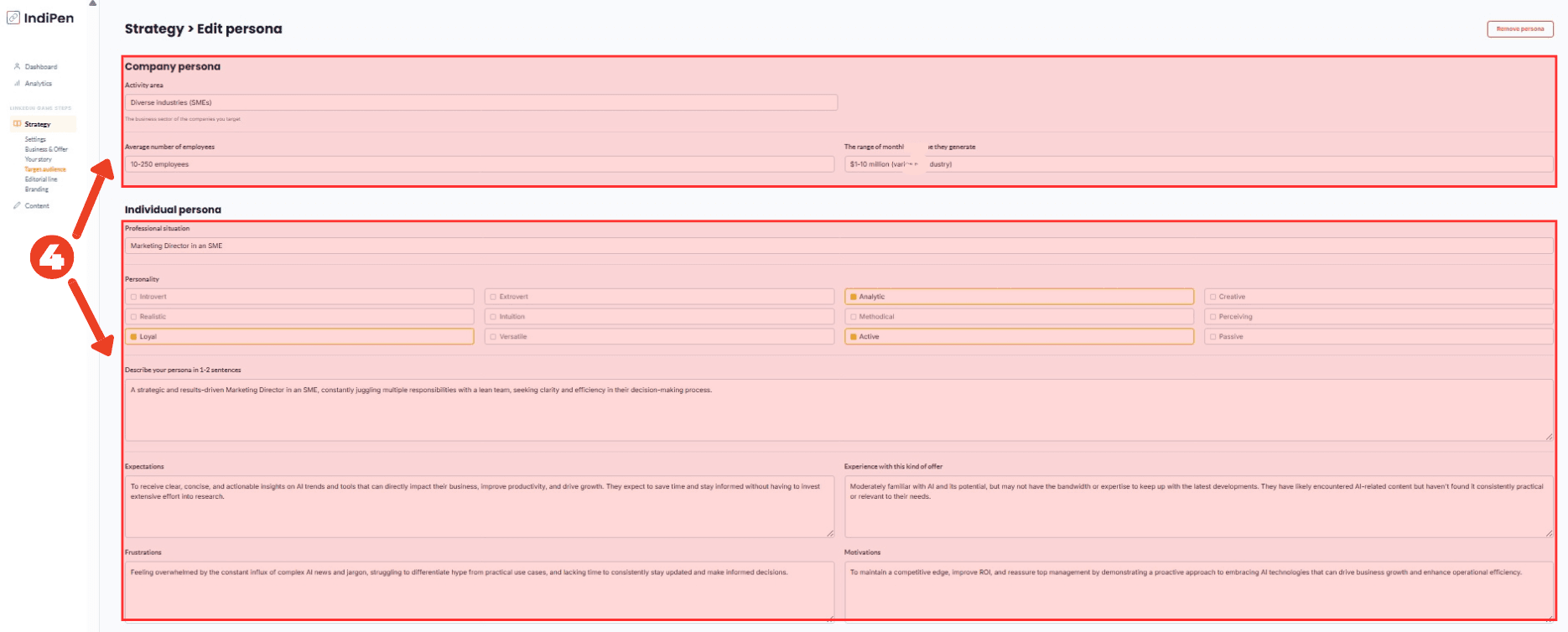
4.5 - List your clients’ pain points
In IndiPen, add up to 30 pain points your prospects face. Think of anything that frustrates them or causes daily problems:
- Difficulty justifying investments
- Time lost on manual tasks
- Lack of clarity on results
- Constant budget pressure
- Lack of internal resources
- Complexity of current tools
- Uncertainty about market trends
- Need to train teams quickly
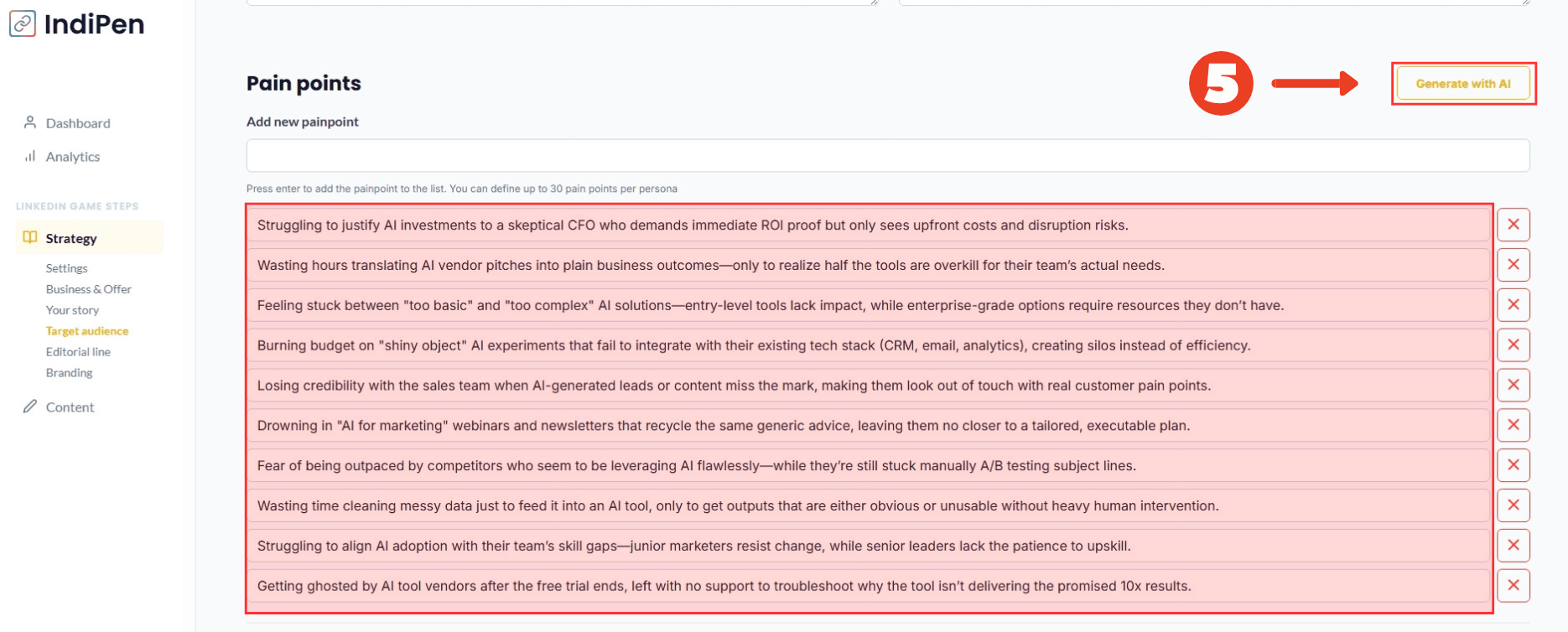
✅ Once your personas and pain points are set, IndiPen has everything it needs to create content that attracts exactly these people to your network and generates business opportunities.
Step 5: Choose your editorial line
Goal: select the content strategy that best matches your offer and audience.
How to do it
5.1 - Select your strategy
In IndiPen, choose one strategy from the three:
- Influencer: Ideal for mass-market offers, to reach a wide audience and build awareness.
- ToFu/MoFu/BoFu: Recommended for intermediate offers, to guide your prospects step by step in your funnel.
- Expert content: Optimal for niche markets, to highlight your expertise and credibility.
💡 Tip: Click the “?” to learn more about each strategy and choose the one that best fits your audience.
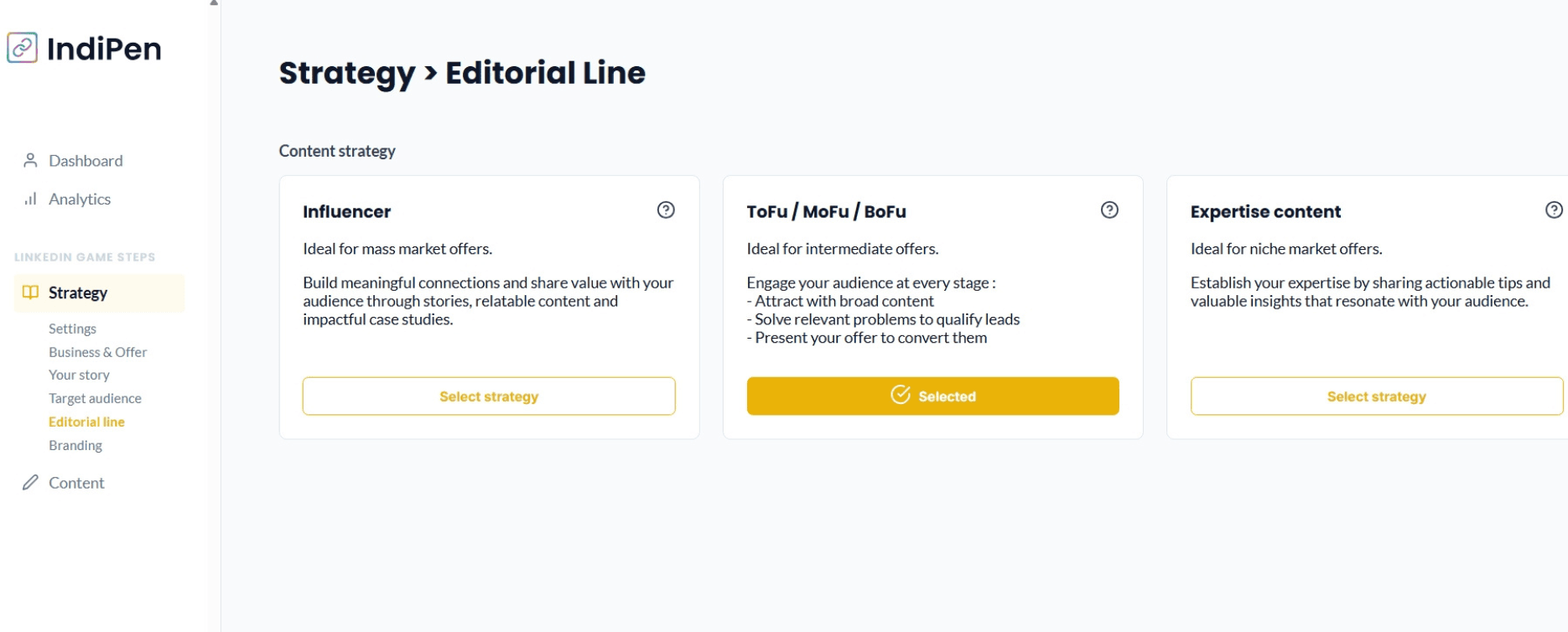
Step 6: Generate and organize your content ideas
Goal: create a constant flow of post ideas aligned with your LinkedIn strategy and goals.
How to do it
6.1 - Access the idea generator
In IndiPen, go to Content > Ideas and click “Find Ideas for Me”.
AI will automatically generate ideas tailored to your profile, audience, and strategy.
6.2 - Organize your ideas by category
Your ideas are automatically organized according to the funnel:
- ToFu (Top of Funnel): Educational content to attract your audience
- MoFu (Middle of Funnel): Case studies and client feedback to qualify prospects
- BoFu (Bottom of Funnel): Testimonials and offers to convert
💡 Tip: Use tags (Carousel, Image, Video…) to vary formats and maintain engagement.
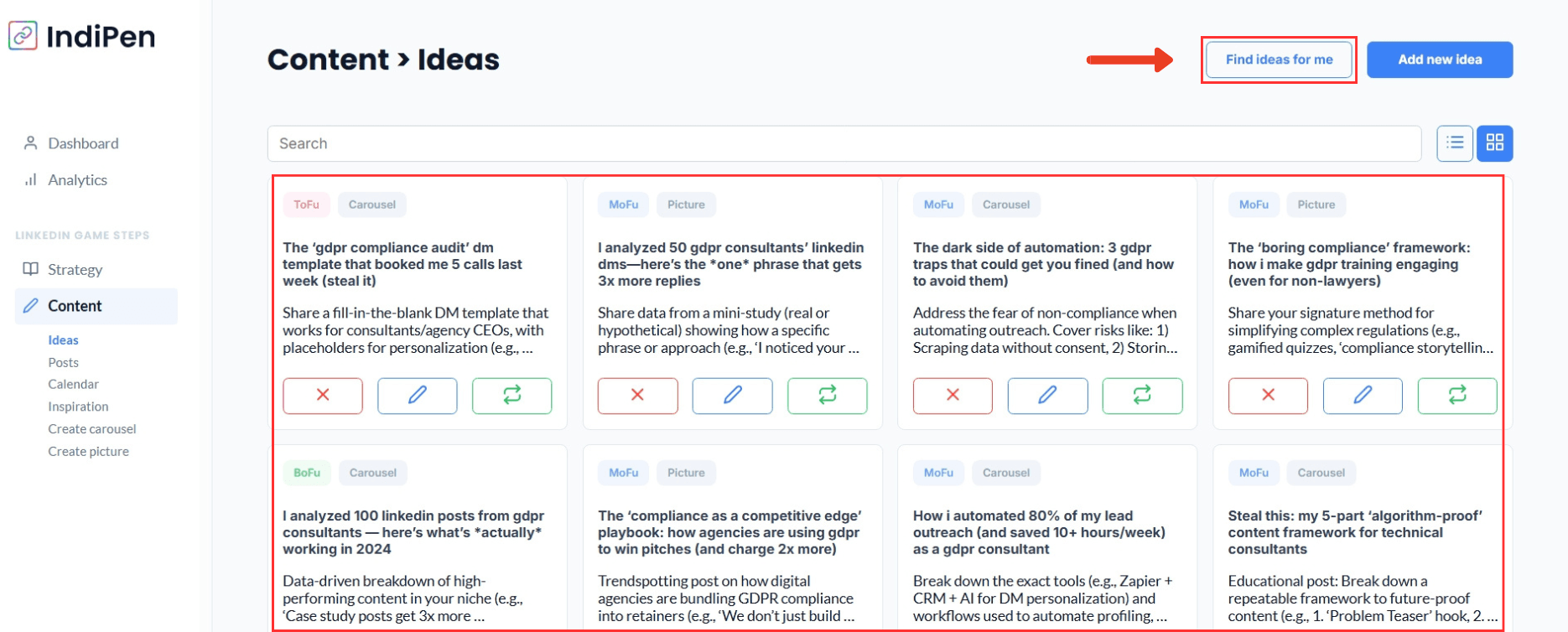
FAQ: Your questions about LinkedIn strategy
Why do I need a LinkedIn strategy?
Without a strategy, you navigate blindly and waste time and energy. A good strategy allows you to attract the right prospects, post relevant content, and turn LinkedIn into a real business lever.
Is this suitable for my industry?
IndiPen adapts to all B2B sectors: consulting, coaching, IT, engineering, finance, design, manufacturing, etc.
How long does it take to create a strategy?
- With IndiPen: 30 minutes for a complete strategy
- Without IndiPen: probably a few hours, depending on your marketing skills and familiarity with LinkedIn
Is this for me if I’m not a marketer?
Exactly! IndiPen translates marketing jargon into simple business language. You don’t need to understand algorithms to get results.
Conclusion: Take action now
You now have all the keys to create a winning LinkedIn strategy. With IndiPen, you can:
- Clarify your positioning and attract the right prospects
- Choose the strategy perfectly suited to your goals
- Save time with a ready-to-execute action plan
- Get measurable results in the first few weeks
- Continuously optimize to maximize your LinkedIn ROI
Imagine in 3 months:
- Your calendar filled with meetings with qualified prospects
- Your expertise recognized in your sector
- Competitors copying your approach
- Your revenue boosted by LinkedIn
Every day without a LinkedIn plan is a missed opportunity to grow your business and network.
Implement your LinkedIn strategy now with IndiPen.
